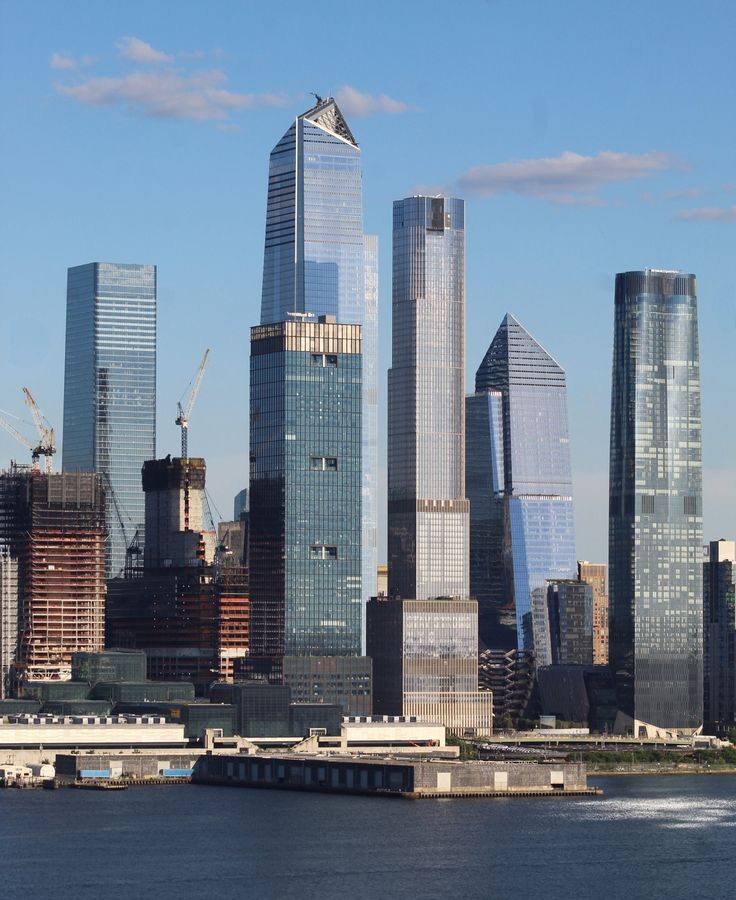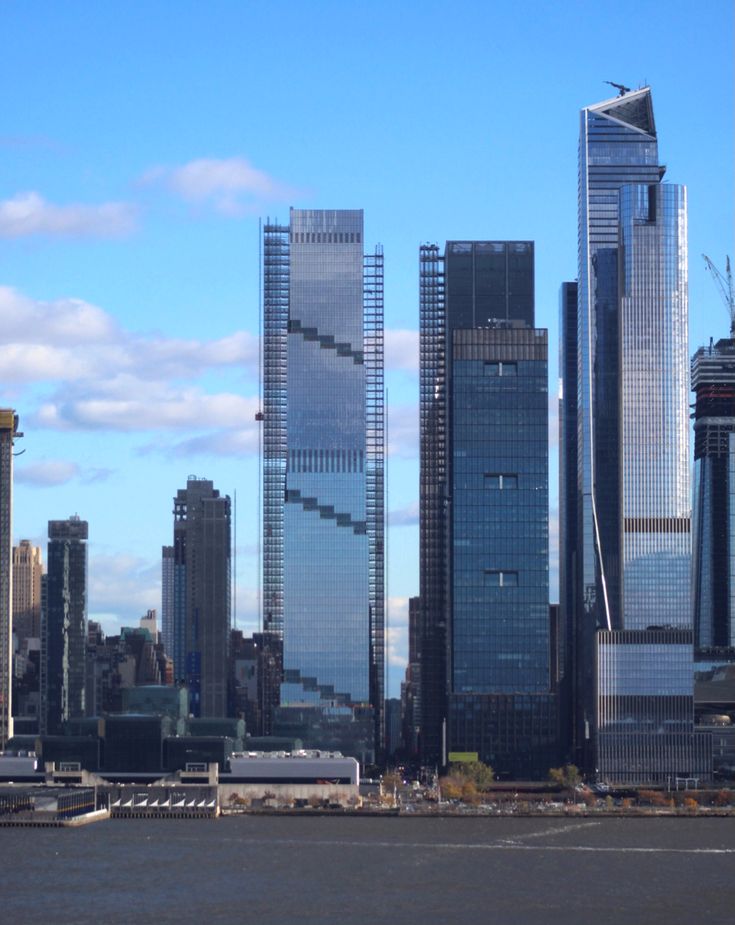Manhattan Real Estate
Manhattan Real Estate Investment

Manhattan is one of the world’s most iconic and valuable real estate markets, offering significant returns for investors over the long term. Real estate investments in Manhattan have consistently proven to be highly profitable, driven by the area’s high demand for residential and commercial properties, proximity to financial markets, and urban development potential. Investment in Manhattan real estate often involves partnerships between major financial institutions, private equity firms, and wealthy individuals.
Below, I’ll break down an example of a significant real estate project in Manhattan, covering the partnerships, investors, investment models, earnings, and more.
Investment in Hudson Yards, Manhattan (Real Estate Development)
Project Name: Hudson Yards Development Project
Location: Hudson Yards, Manhattan, New York City
Type of Project: Mixed-use Real Estate Development (Commercial, Residential, Retail)
Total Project Cost: Approximately $25 billion
Timeline: Development began in 2012, and large portions of the project were completed by 2020, with continued development extending into the mid-2020s.
Project Size: 18 million square feet of office, residential, and retail space, along with parks and public spaces.
Investment Partnership Details
Main Developers and Investors:
Related Companies: Related Companies, a prominent real estate development and investment firm, is the primary developer behind Hudson Yards. Founded by Stephen Ross, Related Companies has a significant portfolio of real estate properties and has been a major player in shaping Manhattan’s skyline.
- Stephen Ross: The founder and chairman of Related Companies, Stephen Ross, is a prominent real estate mogul with a net worth of over $7 billion. His leadership has shaped many of the high-profile projects in Manhattan.
Oxford Properties Group: The Canadian real estate investment firm is a major partner in the development of Hudson Yards, specifically in the office component. Oxford Properties is a subsidiary of OMERS (Ontario Municipal Employees Retirement System), one of Canada’s largest pension funds.
- Investment Involvement: Oxford Properties invested heavily in the project, partnering with Related Companies to fund large portions of Hudson Yards’ commercial spaces, such as the 10 Hudson Yards office building.
KPF (Kohn Pedersen Fox): A globally renowned architectural firm responsible for the design of the majority of the Hudson Yards buildings, including 15 Hudson Yards and 30 Hudson Yards, which are some of the tallest structures in the development.
Private Equity Firms: Numerous private equity and institutional investors have been involved in the funding of this project, including prominent investors from the private equity, pension funds, and sovereign wealth funds.
Investment Breakdown and Strategies
A. Funding Structure
The Hudson Yards development is one of the largest real estate projects in the United States, and it was funded through a combination of equity investment, bank loans, and partnership capital. Here’s a breakdown of the investment approach:
Equity Investment: Related Companies, along with its partner Oxford Properties, provided the equity capital to finance the early stages of the development. The equity investment was used for land acquisition, permitting, and construction.
- Hudson Yards Equity Investment: It is estimated that Related and Oxford contributed roughly $4 billion in equity financing for the project. This was used to purchase the land and fund the construction of the buildings and public spaces.
Debt Financing: To cover the remaining construction costs, Hudson Yards used a combination of debt financing and investment-grade bonds. The developers raised over $10 billion in bonds and loans from major financial institutions, such as Goldman Sachs, JP Morgan Chase, and CitiGroup.
- $2 billion in Tax-Exempt Bonds: One of the key financing tools involved tax-exempt bonds, which were issued for public infrastructure (parks, public spaces, etc.). This helped keep the cost of financing lower while ensuring the development aligned with New York’s economic development goals.
B. Investors Involved
Related Companies:
- Stephen Ross personally owns a significant share of the development and has invested both his own wealth and funds raised from investors and lenders.
- $1 billion Investment: Related Companies provided an equity contribution of about $1 billion for the residential and retail portions of the development.
Oxford Properties:
- Oxford Properties, a key investor, provided substantial capital to the commercial part of the development.
- Oxford invested around $1.7 billion in 10 Hudson Yards, which houses offices for companies such as Coach, L’Oréal, and SAP.
Goldman Sachs:
- Goldman Sachs was a significant equity partner and financier of the project. It provided capital investment in exchange for partial ownership in commercial and residential spaces.
Private Equity & Sovereign Wealth Funds:
- Major institutional investors, such as pension funds and sovereign wealth funds, joined the financing consortium for the long-term revenue generation of the commercial spaces, notably in office leasing and retail space.
Key Properties in Hudson Yards
30 Hudson Yards (The Skyscraper) – $3.7 billion investment
- Developed By: Related Companies, Oxford Properties, and other private investors
- Size: 1.8 million square feet of office space
- Major Tenants: L’Oreal, KPMG, and Warner Media have major offices here.
- Earnings: Rental income from 30 Hudson Yards is expected to bring in $200 million+ annually once fully leased.
15 Hudson Yards (Residential Building) – $1.5 billion investment
- Developed By: Related Companies
- Size: 285 luxury residential units priced between $3 million to $30 million per unit.
- Earnings: With an average sale price of $10 million per unit, the development is expected to generate $2.85 billion in sales. Some units are leased for annual rents exceeding $200,000.
The Shops & Restaurants at Hudson Yards – $2 billion investment
- Developed By: Related Companies
- Retail Income: The retail center features high-end retailers, including Neiman Marcus and Louis Vuitton, expected to bring in annual rental income of over $100 million.
The Vessel (Public Art Installation and Viewing Platform) – $200 million investment
- While not directly a profit-generating property, the Vessel serves as a tourist attraction, increasing foot traffic to the Hudson Yards complex. It has bolstered nearby retail and office demand.
Earnings and Returns
A. Projected Earnings
Office Buildings (30 Hudson Yards): With premium tenants in the office space, Hudson Yards’ office towers are expected to generate $500 million annually in leasing revenue. The office market in Manhattan has traditionally delivered annual returns of 6-8% for similar large-scale investments.
Residential Sales (15 Hudson Yards): The luxury residential units are expected to generate sales revenue in excess of $2.85 billion. High-end condos and apartments in Manhattan typically appreciate 5-7% annually, making this a highly lucrative investment segment.
Retail (Shops & Restaurants): Retail revenue, with its high-end brands, is anticipated to provide an annual return of over $100 million in leasing income. This can vary based on the success of brands, but Manhattan’s prime retail space tends to maintain solid returns.
B. Projected ROI
The IRR (Internal Rate of Return) for investors in Hudson Yards is projected to be in the range of 12-15% annually, with higher returns expected as the development reaches full maturity and demand for luxury office, residential, and retail spaces increases.
First Phase Returns: By 2025, when most of the buildings will be fully occupied and leased, expected returns from completed commercial properties (office spaces) and retail will significantly boost the initial investment.
Long-Term Investment: For long-term investors (10+ years), returns from this high-demand Manhattan real estate will be very solid, with consistent appreciation in both residential and commercial sectors.
Conclusion: Potential of Hudson Yards and Manhattan Real Estate
Investing in Hudson Yards is part of a broader trend of profitable investments in Manhattan real estate. The mix of high-end commercial, residential, and retail spaces ensures substantial returns from different revenue streams, including:
- Office leasing
- Residential sales and rentals
- Retail income
For institutional investors and private equity firms, Manhattan real estate offers a reliable, long-term revenue stream. Given the area’s consistent demand for real estate, especially in areas like Hudson Yards, returns in these projects often exceed general market performance. The partnerships involved in Hudson Yards—including key investors like Oxford Properties, Related Companies, and financial backers like Goldman Sachs—demonstrate the level of confidence that major players have in Manhattan’s real estate potential.
For investors, the development presents an opportunity to benefit from capital appreciation, rental income, and urban development growth, especially given the iconic nature of the Hudson Yards project.


Client Details
Stephen Ross , KPF
Service Provided
Financing, Marketing, Tax Advising, Consulting, Wealth Management
Project Timeline
SYNERGY MHP-811 (2013-Present)
Business Resources
The IRR (Internal Rate of Return) for investors in Hudson Yards is projected to be in the range of 12-15% annually, with higher returns expected as the development reaches full maturity and demand for luxury office, residential, and retail spaces increases.
